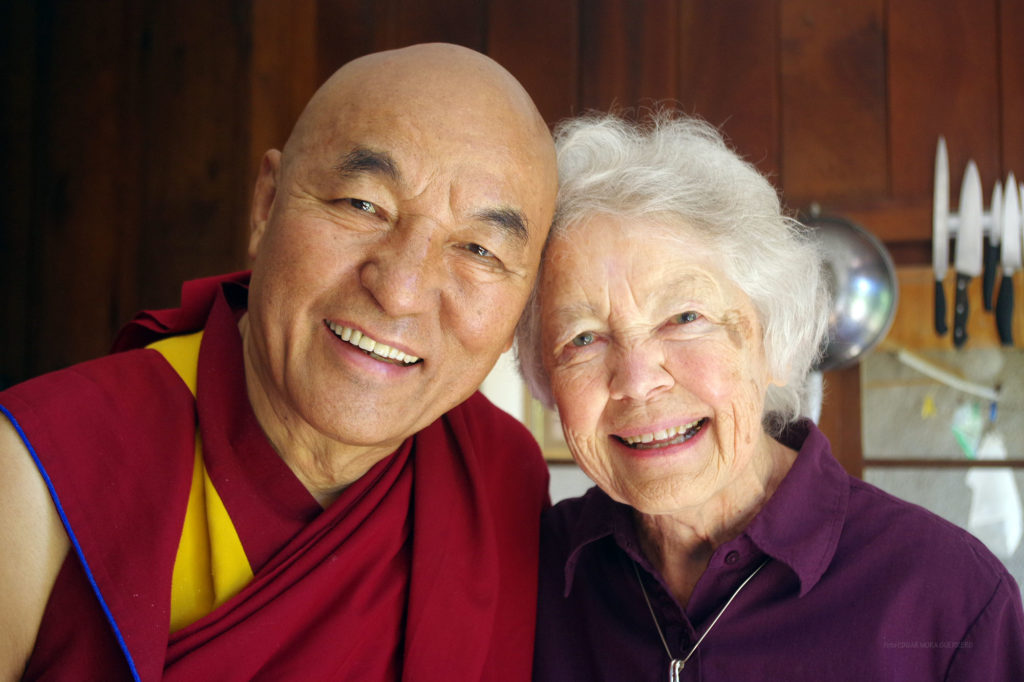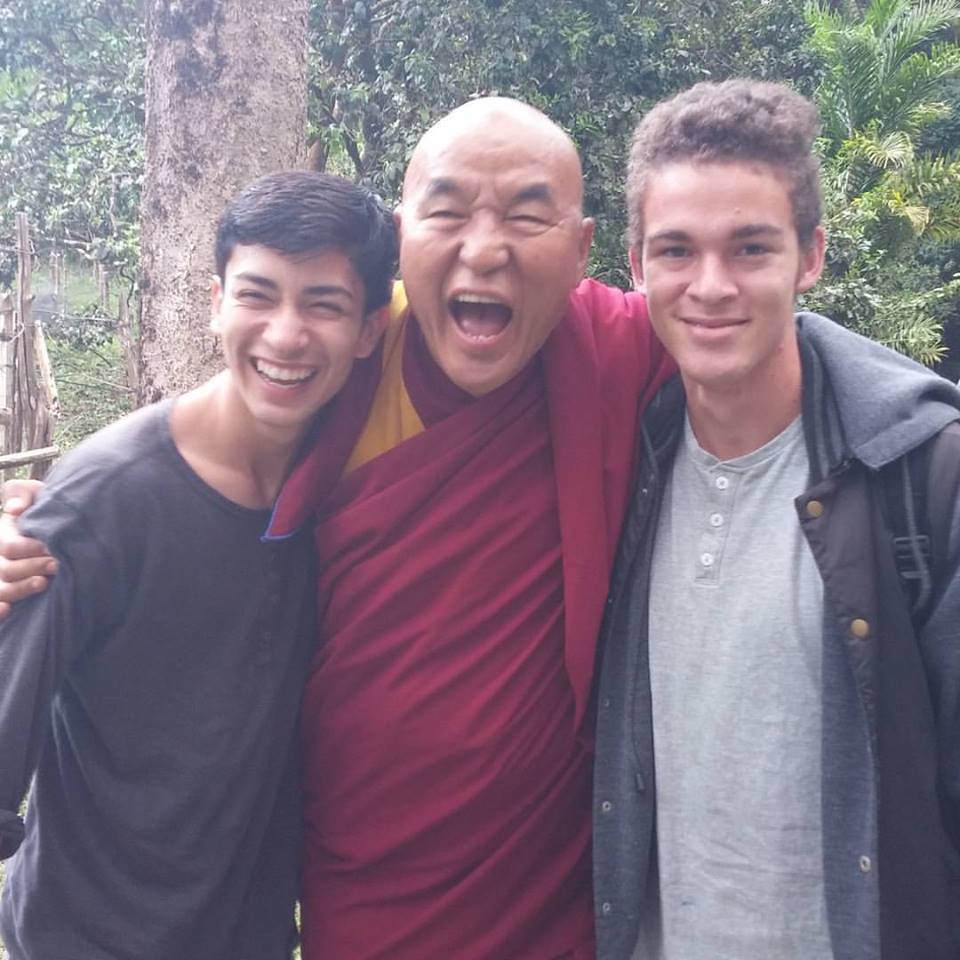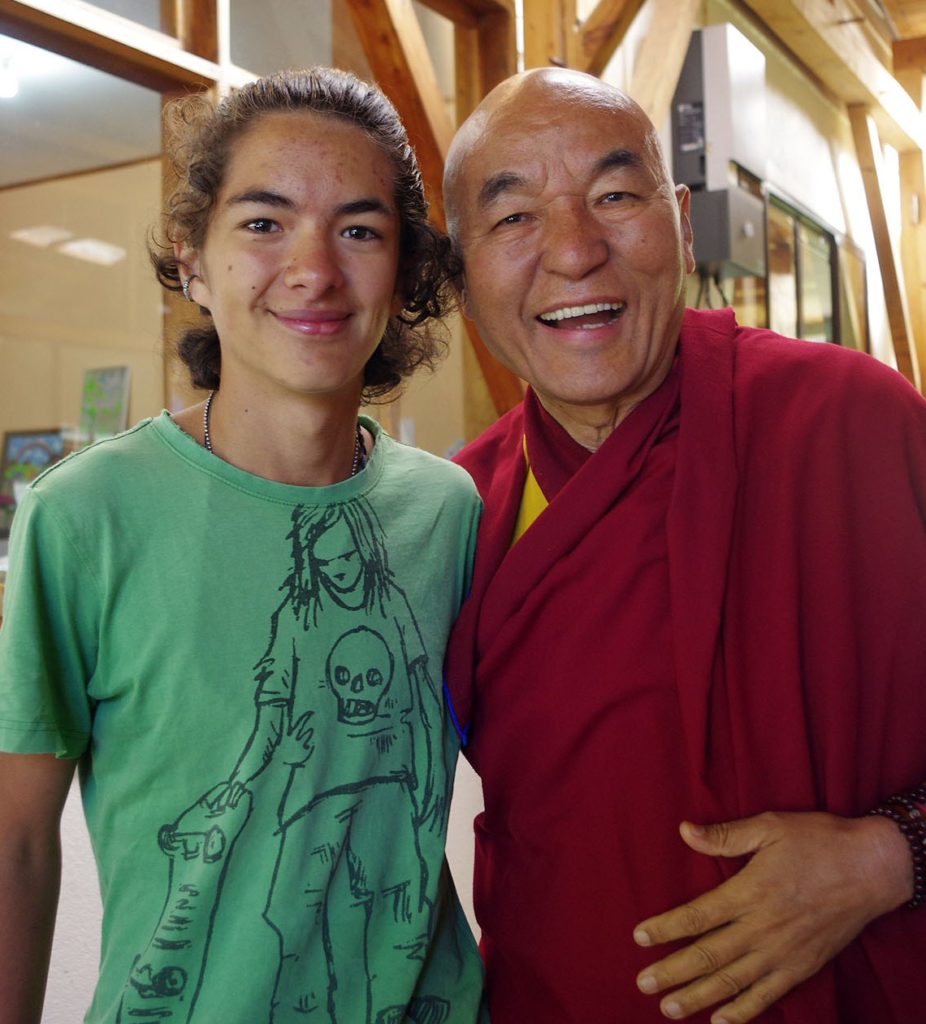Vida Económica
[ en English ]
En este número de Semillas: El tema de este número de “Semillas” es: ¿Cómo podemos nosotros, como individuos, grupos y comunidades, ayudar a crear una forma de vida económica más centrada en los seres humanos y la naturaleza? Muchos de nosotros nos hemos dado cuenta durante mucho tiempo de que las actuales estructuras y políticas económicas mundiales no benefician de ninguna manera al medio ambiente ni sirven al bien común de la humanidad. Pero no estamos indefensos ante los colosales problemas que existen. Podemos crear estructuras alternativas, fomentar cambios de políticas, y adoptar estilos de vida que apoyan el modo de vida económico que visualizamos. Los artículos que siguen al bosquejo biográfico familiar ofrecen muchas posibilidades e ideas.
En cuanto al equipo del boletín, tenemos un nuevo miembro en Kristopher Fleming, que ayudará a Tim Lietzke en el aspecto editorial, especialmente en la selección de temas y la solicitud de artículos. Mike West y Ran Smith continúan sus papeles en el lado de la producción y la publicación.
Esperamos que este número inspire a los lectores a considerar nuevas formas de apoyar una forma de vida económica más centrada en los seres humanos y la naturaleza.
Tabla de Contenido
- Presentando a la Familia Dorrington/Mollica
- ¡Creemos una economía local, circular y de dona en Monteverde! por Katy Van Dusen
- Los Verdes: una moneda social para aumentar la resiliencia económica por Kelly Lange
- La ciudad de quince minutos por Wendy Rockwell
Presentando a la Familia Dorrington/Mollica
Hola de la familia Dorrington / Mollica.
Estamos felices de escribir un pequeño retrato de nuestra familia para el boletín de la Reunión de los Amigos de Monteverde. La Reunión ha tenido un papel muy importante en nuestras vidas durante los últimos cinco años, y sabemos que tenemos la suerte de llamar nuestra a esta comunidad tan especial.
En nuestra casa, encontrará a Ed Dorrington, Jennie Mollica, Alia Dorrington, nuestra gata, Manzanita, diez gallinas y actualmente dos renacuajos. Nuestra familia extendida incluye al padre de Jennie en California y la hermana de Ed y dos hermanos que viven en los Estados Unidos. Antes de venir aquí, vivíamos en Oakland, California, donde Jennie creció y Alia nació. Nuestra vida era una vida de gran ciudad, ocupada y llena, aunque sabíamos cómo escapar a las secuoyas y la costa.
Estamos contentos de contar también en nuestra familia con Richard Trostle, quien es el primo de Jennie una vez removido. Fueron Richard y sus padres, John y Sue, quienes nos invitaron por primera vez (solo Ed y Jennie en ese momento) a visitar Monteverde, lo cual hicimos en 2008. Cuando Alia tenía tres años, en 2014, volvimos a visitar Monteverde otra vez. Durante esa estadía, hablamos con Sue y John durante horas sobre su historia, incluido cómo llegaron a Monteverde y se establecieron aquí. También en ese viaje, en la casa de la Reunión un domingo, escuchamos la sugerencia de que Alia viniera a la Escuela de los Amigos para la clase de Prepa, y bromeamos diciendo que sonaba como un buen plan.
Durante los dos años siguientes, no olvidamos la idea. Fuimos muy afortunados de que Alia pudiera ingresar a MFS en 2016 y tuvo un año maravilloso en la clase de Melody. Ed y Jennie pudieron trabajar de forma remota, suficientes horas para sostenernos, pero no demasiado para evitar que disfrutemos de estar aquí y conocer este lugar y su gente. Pasamos mucho tiempo en el bosque y escuchando los grillos por la noche. Fue una decisión fácil quedarse un segundo año. Alia estaba aprendiendo a leer en español e inglés al mismo tiempo, mientras Ed y Jennie tomaban clases de español en el Instituto. Comenzamos a hacer más proyectos de voluntariado; Jennie enseñaba inglés y Ed ayudaba en todas partes con problemas de tecnología. Sentimos una sensación de comunidad aquí como nunca antes.
La Reunión jugó un papel importante en ese sentimiento de comunidad. Antes, no habíamos tenido práctica familiar de adoración o reunión espiritual. Ed había decidido dejar la iglesia católica de sus padres, y en la crianza de Jennie, lo más cercano a una tradición de fe era la reunión y el intercambio de arte entre los amigos artistas de sus padres. Pero nunca cuestionamos el deseo de participar en la Reunión los domingos, y también los miércoles con todos en la escuela. Estos se convirtieron en partes esenciales de nuestra experiencia de estar aquí: el silencio, la unión, el compartir, la escucha, solo el ser. John y Sue nos dieron la bienvenida a nuestra primera reunión y hablaron sobre lo que significaba para ellos; muy rápidamente cobró significado para nosotros y fue una de las cosas que más lamentamos dejar (junto con los insectos) cuando tomamos la decisión de regresar a California.
Salimos de aquí en 2018 cuando Alia nos dijo que extrañaba a su abuelo y su antigua habitación y un sentido de hogar. Realmente se sintió atraída por Oakland, y habíamos aprendido a confiar en su sabiduría sobre todo tipo de cosas. Hablando en términos prácticos, la mudanza se logró sin problemas: regresamos a la casa que habíamos alquilado en Oakland, y Ed y Jennie continuaron su trabajo remoto sin muchos cambios. Alia experimentó los cambios más importantes cuando ingresó a una gran escuela pública autónoma Montessori. Y hubo otras adaptaciones para volver a vivir en la ciudad: pasar mucho tiempo en la autopista, viajar distancias para ver a amigos y familiares (que estaban muy ocupados, por lo que todas las visitas estaban programadas), comprar en las grandes tiendas y tener que salir de nuestro camino más para encontrar los árboles y las mariposas y los grillos. Todos extrañamos Monteverde pero encontramos lo que se podía apreciar donde estábamos.
Hicimos un viaje corto de regreso aquí en enero de ese año, solo para mantener amistades y disfrutar algunos días con el bosque. En ese viaje decidimos mudarnos a Monteverde. Alia nos dijo que deberíamos volver y hacer un hogar aquí, así que una vez más, seguimos su sabiduría. ¡Gracias, Alia!
Ahora estamos en nuestro segundo año desde nuestro regreso aquí y esperamos los años venideros. Apreciamos la Escuela de los Amigos de muchas más formas de las que podríamos haberlo hecho antes: las conexiones cercanas con las familias, los maestros y el personal, las lecciones que introducen lo académico junto con los valores que nos importan, la cercanía de los grados de pre-kinder hasta la escuela secundaria (cuando podemos estar todos juntos en persona), la feliz mezcla de español e inglés, los hermosos edificios y el patio. Hemos echado de menos la Reunión del miércoles de este año, pero el regreso recientemente a las Reuniones domingueras en la casa de reuniones ha sido reconfortante. Estamos inmensamente agradecidos por haber vivido este año pandémico rodeados de tanta buena voluntad, apoyo mutuo y naturaleza abundante.
¡Creemos una economía local, circular y de dona en Monteverde!
por Katy Van Dusen
¿Qué podemos hacer como individuos, grupos y comunidades para crear una economía más centrada en la naturaleza y las personas?
Seamos conscientes de cómo afectan a las personas y al planeta nuestras prácticas económicas.
Comprometámonos a cambiar a una economía local, una economía circular y una economía de dona.
Celebremos, apoyemos y aprendamos de los miembros de nuestra comunidad del Meeting que ya están tomando acciones específicas.
Apoyemos, participemos en y cultivemos las iniciativas de economía local, economía circular y economía de dona aquí en la zona.
Consumir productos y servicios locales fortalece la resiliencia comunitaria.
Cuando compramos productos y servicios de fuera de la zona, los recursos financieros se van de la comunidad. Por lo contrario, cuando le compramos a empresas locales, esos recursos continúan circulando en la zona.
Una producción local más diversa nos haría menos dependientes del turismo y de la producción cafetalera y láctea. Cuando hay crisis como la tormenta tropical Nate o la pandemia, más de los productos que necesitamos podrían estar disponibles a nivel local.
¿Y qué es una economía circular? ¿Qué es una economía de dona?
Para entender qué es una economía circular, ayuda entender qué es una economía lineal:
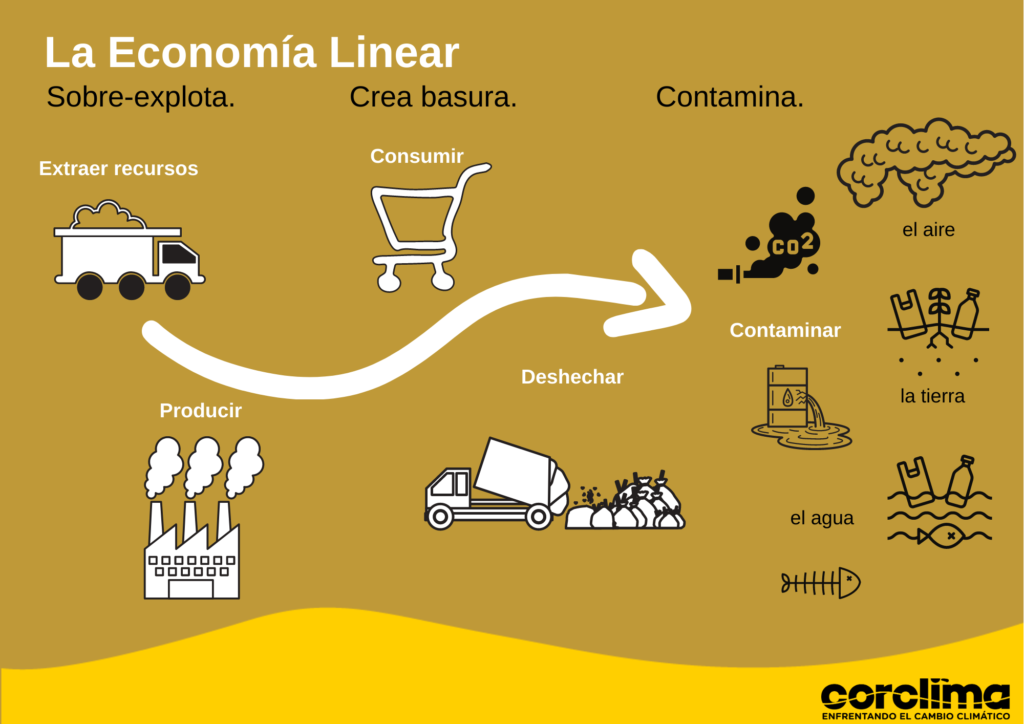
La mayoría del mundo opera como una economía lineal. Las economías lineales generalmente ignoran los costos y beneficios sociales y ambientales.
En contraste, así es cómo se ve una economía circular:

La economía de la dona es un marco visual para una economía que intenta cumplir los Objetivos de Desarrollo Sostenible de las Naciones Unidas. Es una idea desarrollada por Kate Raworth que va más allá de la idea de una economía circular. Una economía de dona busca encontrar un balance que respeta las necesidades básicas sociales y los límites del planeta. Una economía de dona se mantiene en una zona regenerativa con un uso justo de recursos.
Así se ve una economía de dona:

Para una explicación más completa de la economía de la dona, recomiendo el libro Doughnut Economics: Seven Ways to Think Like a 21st-Century Economist, sitio web o Ted Talk de Kate Raworth.
Celebremos, apoyemos y aprendamos de los miembros de nuestra comunidad del Meeting que ya están tomando acciones importantes para crear una economía en Monteverde que nutre a las personas y al planeta:
Producción y Consumo de Alimentos:
Los Stuckey, Benito Guindon, Tim Sales y Murtha Derr, Aaron Hockman y Greg Paradise no utilizan fertilizantes nitrogenados sintéticos en sus fincas.
Larry Dosier, Harriet Joslin, Richard LaVal, Richard Trostle y Mel Baker tienen huertas orgánicas que han inspirado a muchas otras personas de Monteverde a crear sus propias huertas.
Muchos miembros del Meeting disfrutan de los productos lácteos de Benito Guindon y dependen de Ryan, Ran y Nicolette Smith para los helados de El Camino Gelato.
John Badminton y Pax Amighetti tienen muchos productos locales y orgánicos disponibles en Whole Foods.
Tim Lietzke, Hazel Guindon, Pam Holschuh, Marie y Kris Fleming tienen una dieta vegana.
Transporte y uso de energía:
Tim Lietzke, Helena Guindon y Tim Curtis, Hazel Guindon, Kenna Manos, Bob Law y Susie Newswanger y Ed Dorrington y Jennie Mollica han escogido no tener un vehículo y caminan como su modo de transporte principal.
El Meeting, los Trostle, los LaVal y otros están colaborando con la construcción de aceras contiguo a su propiedad para que las personas puedan caminar o movilizarse en silla de ruedas de forma segura.
Bruce Pack y Judy Witt, Meredith Reynolds, Nancy y Peter Stevick y Frank y yo manejamos carros eléctricos.
Sarah Dowell y Mel Baker, Margaret Adelman, Wendy Rockwell y Jim Standley y Frank y yo manejamos carritos de golf eléctricos.
Ryan Smith, David King, Maggie Fatovic y Elias Newswanger se movilizan por el pueblo en bicicletas eléctricas y Mike West y David Guindon andan sus bicicletas usando energía propia.
Ran y Nicolette Smith han instalado puntos de carga de 240 V en sus dos pensiones en Santa Elena y Sámara y tienen estacionamientos para bicicletas en su pensión en Santa Elena.
Antes de la pandemia, Ulises Salazar hacía cumplir las buenas prácticas de estacionamiento en el parqueo del Meeting/la escuela. Esto ha reducido la necesidad de ampliar el parqueo para tener más espacio para tránsito de vehículos con motor de combustión interna.
Carol Evans, Wendy Rockwell y Jim Standley y Barry y Lesley Laing cocinan con plantillas de inducción en vez de gas.
Sarah Stuckey, Joe y Jean Stuckey, Meredith Reynolds, Frank y yo y de seguro otros tenemos paneles solares y/o calentadores de agua solar. Bruce Pack ha proporcionado mucho apoyo técnico para los paneles solares de la escuela.
Murtha y Tim usan un sistema hidroeléctrico.
Gestión de residuos y conservación de agua:
Sarah Dowell ha trabajado duro con otras personas en COMIRES para hacer posible un aumento en el reciclaje en la zona.
La mayoría de nosotros en la comunidad del Meeting hacemos abono orgánico. Muchos utilizan el creciente sistema municipal de compostaje que lidera Justin Welch. Carol Evans, Noelia Solano y Daniel Vargas tienen sistemas activos de compostaje Takakura, si quiere aprender de ellos. Si quiere empezar su propio sistema de compostaje, CORCLIMA tiene un manual con 16 opciones. ¡Pregúnteme!
Lucky Guindon, Wendy y Jim, Meredith y la escuela tienen inodoros secos de compostaje. Ulises ha estado manteniendo el sistema de inodoros secos de la escuela. Steve Abbott, Gabriela McAdam y Aníbal Torres continúan mejorando los diseños de inodoros secos que funcionan bien aquí. CORCLIMA tiene un manual sobre cómo construir uno. ¡Pregúnteme!
Aníbal Torres y Gabriela McAdam están ayudándole a las personas a conservar agua y manejar bien el uso de agua al instalar “humedales artificiales” para tratar las aguas grises además de jardines infiltrantes (rain gardens) y otros sistemas de captura de agua.
Conservación de bosques:
Martha Campbell, Ricardo Guindon, José Luis Vargas y otros trabajan incansablemente para conservar en perpetuidad los recursos de agua y biodiversidad en el terreno de Bosqueterno S.A. al estar en su junta directiva.

Dev Joslin, Deb Hamilton, el equipo de trabajo del Instituto Monteverde y muchos otros trabajan duro para sembrar árboles y restaurar el hábitat en la zona. Más lejos, Clara Rowe está dirigiendo Restor y Francis Joyce está haciendo su doctorado en restauración de hábitats.
Bob Law, Richard LaVal, Wolf Guindon, Joe Stuckey y otros fundaron la Asociación Conservacionista Monteverde. Ahora muchos somos miembros y seguimos conservando la reserva privada más grande del país. Noelia Solano y Emily Hollenbeck están en la junta directiva de la organización.
Nat Scrimshaw promueve el turismo rural y la conservación en el Corredor Biológico Pájaro Campana por medio del Sendero Pacífico.
Educación y bibliotecas:
Marisela López, Jenny Rowe, Melody Guindon, Risë Hunter, Jackie LaVal, Sue Gabrielson, Pam Holschuh, Daniel Tyx, Laura Nikstad y muchos otros educadores están preparando a las generaciones más jóvenes a cuidarse entre sí y cuidar el planeta.

Por décadas, Jean Stuckey, Sarah Stuckey, Sarah Dowell, Murtha Derr y el resto del Comité de la Biblioteca han hecho posible la lectura sin comprar libros nuevos y han dirigido el cachivache, ayudándonos a circular recursos a nuevos dueños en vez de tener cosas en desuso o enviarlas al vertedero.
Wendy Rockwell, Jannelle Wilkins y otros del comité que dirige la biblioteca pública en Santa Elena también han creado un espacio para compartir libros con la comunidad más amplia – usando energía solar.
Movilizando recursos:
Ellen Cooney dona su tiempo y experiencia para asegurar que los estudiantes de familias de menores recursos puedan asistir a la Escuela de Amigos de Monteverde.
Tim Curtis, Jannelle Wilkins y otros movilizan recursos que apoyan directamente a la sostenibilidad y una distribución más equitativa por medio del Fondo Comunitario Monteverde.
Arte:
Con su arte, Hazel Guindon nos ha inspirado a vivir en edificios que no matan aves.
Sarah Dowell ha presentado exposiciones de acuarelas e interogantes que nos provocan contemplar el crisis climática.
Sin duda alguna hay más ejemplos que debí incluir y quizás de los que no estoy enterada. Muchas gracias a cada uno de ustedes, los que mencioné y los que no mencioné aquí, por lo que están haciendo por un sistema económico más justo y regenerativo.
Nuevas iniciativas de economía circular y de dona en las que puede que quiera involucrarse:
Cuando empezó la pandemia el año pasado, varias organizaciones locales se unieron para crear la Comisión de Enlace para responder a la crisis. Una de las cuatro subcomisiones fue la Comisión de Economía Circular, de la cual Jannelle Wilkins es la coordinadora. Abajo se encuentran algunas iniciativas que salieron de esa comisión – y en general.
Trueque: Circular recursos en la zona sin depender de dinero tradicional.
Los Verdes son la nueva moneda social que le permite a uno intercambiar destrezas con otros locales. También puede ganar Verdes por medio de acciones sostenibles, voluntariado o pagando por ellos con colones. Aquí hay un video con más información. Puede usar este enlace para registrarse.
La Tilichera es un nuevo centro de trueque ubicado contiguo al Banco de Costa Rica. Es manejada por madres de la Escuela de Amigos de Monteverde que trabajan a cambio de parte de su matrícula. Es una excelente forma de seguir circulando cosas en la comunidad en vez de tenerlas guardadas en el clóset o la gaveta de alguien. Se puede hacer un trueque, pagar con Verdes, recibir Verdes o simplemente hacer una donación si se está deshaciendo de cosas. ¡Se necesitan donaciones! Está abierta de las 10 am a 6pm de lunes a sábado. Pronto, La Tili espera comenzar a suprareciclar (upcycle) otros materiales usados. Hable con Shannon Smith o conmigo si quiere involucrarse.
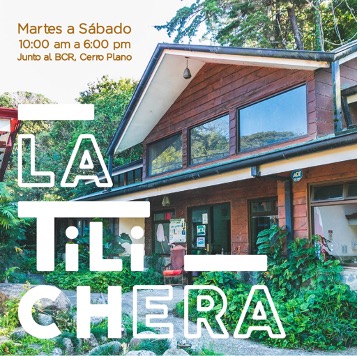
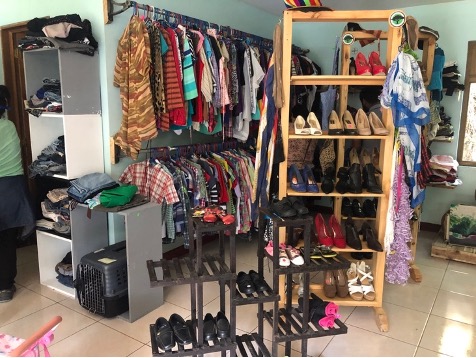
Compre local:
Puede ayudar a que nuestra economía local se mantenga resiliente comprando productos locales sostenibles.
El Instituto Monteverde mantiene actualizada esta guía virtual de los productores locales. Aquí hay una versión en pdf. Y este mapa interactivo muestra dónde están los negocios.

Hecho en Monteverde es un consorcio de 33 empresas locales que se enfocan en practicas creativas y regenerativas, conservación y sostenibilidad, con un sello que demuestra la calidad y el origen en Monteverde. Para más información, contacte a Daniel Vargas, Noé Vargas o Jenny Peña.
Econexiones es una nueva empresa local por medio de la cual se pueden comprar productos de esta zona y de otras partes de Costa Rica. Cada lunes se puede encontrar su lista de productos aquí. Haga su pedido antes del martes a las 5 pm para productos de fuera de la zona o antes del miércoles a las 5 pm para productos de la zona. El jueves, puede recoger su pedido o que se lo entreguen en su hogar.
Construyendo Comunidad: La resiliencia depende de comunidades fuertes en las que nos apoyamos mutuamente.
La Huerta Comunitaria en Cerro Plano está transformando el redondel en Cerro Plano en un lugar para que más de 30 familias cultiven alimentos y en un lugar de encuentro para la comunidad. Si sabe de un residente de Cerro Plano que le gustaría participar o si quiere ayudar de alguna forma, por favor contacte a Paula Vargas al 8371-5467.

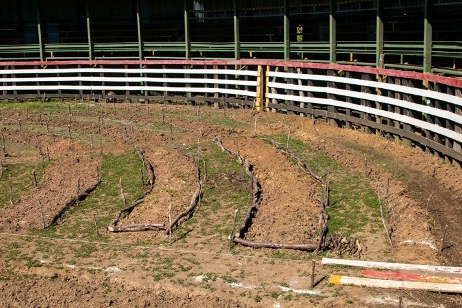
Sembrando Sostenibilidad es un programa del Instituto Monteverde que está ofreciendo trabajo temporal en proyectos de sostenibilidad a personas locales en condición de desempleo.
El Banco de Alimentos continúa recibiendo donaciones. Los alimentos se pueden llevar a La Tilichera. Se pueden hacer donaciones en efectivo al Fondo Comunitario.
Dos proyectos de arte están embelleciendo nuestros espacios, levantando ánimos, creando comunidad e inspirando acciones: Resilienza ha estado creando arte con tiza cada semana en la pared de pizarra de Monteverde Centro desde que empezó la pandemia. Monteverde Resiliente (un proyecto en conjunto entre CORCLIMA y Costa Rica en la Pared) está pintando murales y haciendo mosaicos en Santa Elena y Cerro Plano.



Movilidad Activa: Cuide su salud y reduzca sus emisiones y el congestionamiento vial caminando o andando en bicicleta – o apoyando a otros que lo hacen.
Bicionarios Monteverde es un movimiento para apoyar el ciclismo seguro como modo de transporte. Si maneja, por favor deje 1.5 metros entre usted y los ciclistas y motive a otros a hacer lo mismo pegando una calcomanía en su vehículo o patrocinando la instalación de un rótulo. Contácteme para más detalles.

Para continuar instalando aceras que sean seguras y accesibles para todos, ¡se necesita ayuda! Legalmente, es responsabilidad del propietario instalar aceras. Para las recientes instalaciones de aceras, la municipalidad y CORCLIMA han estado haciendo la mayor parte del trabajo. Pronto, se nos acabará el cemento. Por favor hable conmigo o con Aníbal Torres si le gustaría ayudar a comprar más cemento.
¿Cómo podemos diversificar la economía, creando empresas que promueven una economía local circular-dona?
La pandemia esclareció lo dependiente que es nuestra economía en el turismo – un 85% de la población estuvo desempleada o subempleada al inicio de la pandemia.
¿Qué ideas tiene usted de nuevos negocios que no dependan del turismo? Algunas ideas de productos que me encantaría ver hechas aquí:
- Pañales de tela/cobertores
- Hongos
- Losas permeables para aceras hechas de materiales reciclables
- Sistemas de compostaje ya preparados, especialmente sistemas Takakura o de tambor rotatorio
- Inodoros secos de compostaje listos para instalar
- Techitos para proteger toma corrientes de 240 V en exteriores para la Ruta Eléctrica



¿Sabe de alguien que le interesa o quiere ayudar a hacer realidad estas nuevas empresas?
Si le gustaría involucrarse más en una economía local que mitiga y adapta al cambio climático, visite el sitio de web de CORCLIMA y contácteme (katyvandu@gmail.com).
¡Gracias a cada uno por lo que esté haciendo por hacer de nuestra economía una que nutre a las personas y al planeta!
Los Verdes: una moneda social para aumentar la resiliencia económica
por Kelly Lange
La región de Monteverde no es ajena a los desastres naturales, pero la pandemia global trajo nuevos desafíos al área nunca antes vistos, principalmente en forma de desempleo e inseguridad económica. Con el desempleo llegando al 80%, la inseguridad alimentaria y económica llegó a la zona, y los turistas tan necesitados dejaron de venir con el cierre de aeropuertos en todo el mundo y los cierres en muchos países.
Después de que la tormenta tropical Nate dejó su huella en el área, la necesidad de diversificar la economía se identificó como una prioridad máxima y, aunque se habían logrado algunos avances, la cruda realidad de nuestra dependencia excesiva del turismo nunca fue más evidente que en 2020. Sin embargo, la increíble organización e interés en la participación comunitaria aquí en Monteverde ayudó a formar Enlace – un consorcio de grupos y organizaciones en el área – que comenzó a movilizar y distribuir canastas de alimentos rápidamente, mientras también abordaba otros temas, entre los que destacaba la iniciativa hacia una Economía más Circular para la región de Monteverde.
Como parte de los esfuerzos hacia una Economía Circular, se han explorado varios tipos de Economías Alternativas y se han implementado algunas de ellas, incluida Los Verdes, una moneda digital en línea basada en la tecnología blockchain. Los Verdes son la moneda local propia de Monteverde, creada aquí, en circulación aquí, y diseñada para brindar resistencia a la economía existente, independientemente de lo que esté sucediendo fuera de la región.
Ahora bien, si te preguntas ¨¿Qué es una moneda digital? ¿Y para qué necesitamos uno aquí cuando ya tenemos colones? ¨, ¡no estás solo! Pero primero, exploremos la idea de las monedas locales.
Una moneda local no es más que un acuerdo entre vecinos dentro de una comunidad que X tiene valor. Desde los mayas que usaban granos de cacao para el comercio, hasta las plantaciones de café aquí en Costa Rica que usaban fichas con el nombre de la familia propietaria de la finca para comprar productos en la pulpería local, las monedas locales son tan antiguas como las propias civilizaciones organizadas. Son una forma de que las personas valoren los artículos para que puedan intercambiarse más fácilmente entre muchas personas. Los Verdes funcionan de la misma manera.
Si lo considera un trueque o un intercambio, entonces, en lugar de ser simplemente entre dos personas intercambiando empanadas por elotes, por ejemplo, cualquiera tiene la capacidad de vender su producto o servicio por una cantidad que parece justa, y luego puede usar los Verdes ganado para intercambiar por cualquier otro producto o servicio disponible en la Comunidad Verdes. Al tener una forma de pago separada disponible además de los colones, cada miembro expande su propia capacidad de recuperación a través de la capacidad de ahorrar más colones y usar Verdes para comprar los artículos necesarios, como alimentos y ropa.
Los Verdes en sí tienen un valor de 1:1 en colones, lo que facilita establecer un precio y realizar un intercambio, aunque no se pueden convertir en colones. Además, su circulación está restringida a la región de Monteverde, asegurando que la economía continúe moviéndose incluso cuando los turistas no están aquí.
Como se mencionó anteriormente, los Verdes son una moneda digital y operan en una aplicación web creada por una empresa costarricense llamada Cambiatus. Una vez que esté registrado, será recompensado con 3000 Verdes para comenzar y podrá comenzar a navegar por la tienda de inmediato. Para ganar más Verdes, además de vender sus propios productos y servicios producidos localmente en la Tienda en línea, también puede tomar una serie de acciones con mentalidad comunitaria, como el trabajo voluntario con cualquier organización en la comunidad, o tomar acciones ambientalmente sostenibles como caminar al trabajo, tener un sistema de compostaje doméstico, usar un vehículo eléctrico o instalar una cocina de inducción, entre muchos otros ejemplos. Muy pronto también queremos recompensar a quienes asisten a los talleres y clases que se ofrecen en toda la comunidad.
La Comunidad Verdes se lanzó a mediados de enero, y en tres (3) semanas ya teníamos más de 1000 personas registradas en la plataforma. Al momento de la publicación de este boletín, tenemos casi 1500 personas registradas, ¡más del 20% de la población! El sábado 6 de marzo, celebramos nuestro primer Día de Los Verdes oficial en RioChante, y prácticamente todos los productos disponibles se vendieron (por 100% Verdes), ¡y se vendieron rápidamente! Todos los participantes estaban entusiasmados con la oportunidad y preguntaban cuándo tendríamos otra; esperamos tener nuestro próximo Día de Los Verdes el sábado 20 de marzo, de 10 a.m. a 1 p.m.
Por el momento, los Verdes solo están disponibles a través de la aplicación web, aunque somos muy conscientes y estamos trabajando en formas de incluir a todos en la región en la Comunidad Verdes brindando oportunidades para comerciar en Verdes a aquellos con menos inclinaciones tecnológicas.
Puede encontrar más información y encontrar un enlace para unirse a la Comunidad Verdes visitando nuestro sitio web (¡aún en construcción, pero actualizado a menudo!) En www.verdes.earth y viendo algunos videos informativos en el canal de YouTube ¨Verdes en Monteverde¨ , o accediendo a él a través de este enlace: https://youtu.be/qRphrJpdrwE.
Si tiene preguntas adicionales, también puede escribirnos a verdesmtv@gmail.com.
La Ciudad de Quince Minutos
por Wendy Rockwell
Tan pronto como la tierra de cualquier país se ha convertido en propiedad privada, los terratenientes, como todos los demás hombres, aman cosechar donde nunca sembraron y exigen una renta de la producción natural
Adam Smith, 1776
¿Qué podemos hacer como individuos, grupos y comunidades para crear una forma de vida económica más centrada en los seres humanos y la naturaleza?
La actual estructura económica está construida por y para unos pocos, lo que les permite desviar la riqueza de los recursos naturales. Actualmente, los ricos son ricos no por sus propios esfuerzos, sino por cosechar lo que no sembraron.
Un sistema político que permite a los individuos captar la plusvalía de la tierra producido por la comunidad se verá plagado por la especulación de la tierra que conduce a la inevitable mala distribución de la riqueza, la inflación, el desempleo, la caída y los ciclos económicos de auge, gran parte de la población en la pobreza cuyas necesidades no se satisfacen y una minoría adinerada que impone poderes dictatoriales para promover su poder económico y sus privilegios.
Cuando las personas no tienen acceso a vivir cerca de su trabajo, deben viajar diariamente largas distancias y esto consume mucho tiempo reduciendo la calidad de vida, pero también es un factor principal contribuyendo al cambio climático. Para esto hay una solución, un mejor aprovechamiento de la tierra.
La tierra es nuestra herencia en común, por lo que nuestra relación con la tierra es tanto económica como ética. La tierra no debe ser saqueada, sino utilizada para el bien común. Las personas que sienten una conexión con la tierra también se preocuparon de ella. Todas las generaciones deben tener la misma oportunidad de disfrutar de la riqueza natural.
Si nuestras ciudades o pueblos se estructuran de manera que la mayoría de nuestras necesidades pudieran satisfacerse dentro de los quince minutos de nuestros hogares, esta necesidad de transporte se eliminaría prácticamente.
Podríamos adoptar un sistema de desarrollo social que capture los valores de la tierra que financiaran los servicios necesarios, que incluyen aire respirable, agua potable, tierras de propiedad común, atención médica, seguridad, tránsito, energía, comunicaciones, servicios financieros, educación, recreación para la ventaja de todos.
No todos podemos tener una cancha de tenis, una piscina, etc., pero podemos tener esto y mucho más si compartimos. Necesitamos volver a los espacios comunes donde la comunidad proporciona espacios públicos para que nuestros requisitos individuales de espacio puedan reducirse cómodamente.
El valor de la tierra lo produce la comunidad. Si no hay población ni infraestructura para mantener a esa población, la tierra no tendrá valor. El valor de la tierra lo produce la comunidad y, por tanto, pertenece a la comunidad. Si la comunidad recupera este valor para invertirlo en la comunidad, se elimina la necesidad de imponer cargas fiscales a la producción.
Que cada persona se sienta parte de y apreciado son los hilos que tejen una comunidad. Esto debe ser respaldado por una estructura económica que lo promueva. No pueden prosperar si la estructura económica promueve el crecimiento continuo, favoreciendo a las corporaciones y las ganancias sobre las personas, subvencionando la contaminación y la destrucción del medio ambiente.
El aprecio por las pequeñas cosas de la vida es lo que nos hace felices, no el consumismo continuo. Lo que he descubierto a medida que envejezco es que mis posesiones parecen cada vez más una carga, no una alegría.
Nuestro trabajo, nuestro aporte a la comunidad es de vital importancia, debemos sentirnos útiles a los demás. Las personas deben ser valoradas por lo que contribuyen al bien común, no por sus pertenencias.
Siempre he pensado que nuestra necesidad de acumular posesiones se basa en nuestro miedo a la pobreza, y nuestra inseguridad. Una sociedad que puede y se preocupa de los suyos reduciría en gran medida este miedo, permitiendo a las personas ser más felices con menos, liberándolas para participar en actividades que traen felicidad como compartir y servir a los demás.
Es mucho lo que una comunidad puede hacer por sí misma. Monteverde es un ejemplo de una comunidad que ha reforzado los conceptos de procesos de toma de decisiones consensuales, conservación y apreciación del medio ambiente y un alto compromiso con la educación de calidad.
Pero los cambios que se necesitan en este momento requieren la participación no solo de un segmento más amplio de la zona, sino también el involucramiento con la estructura política.
¿Cómo progresamos de donde estamos a dónde queremos estar? ¿Estamos dispuestos a asumir las responsabilidades de la democracia, no solo votando cada dos años, sino también tomando tiempo para saber qué decisiones está tomando nuestro gobierno local? ¿Estamos dispuestos a comprender el presupuesto de nuestro gobierno local y participar en su construcción?
¿Estamos demasiado comprometidos con el sistema actual como para querer hacer cambios fundamentales?





